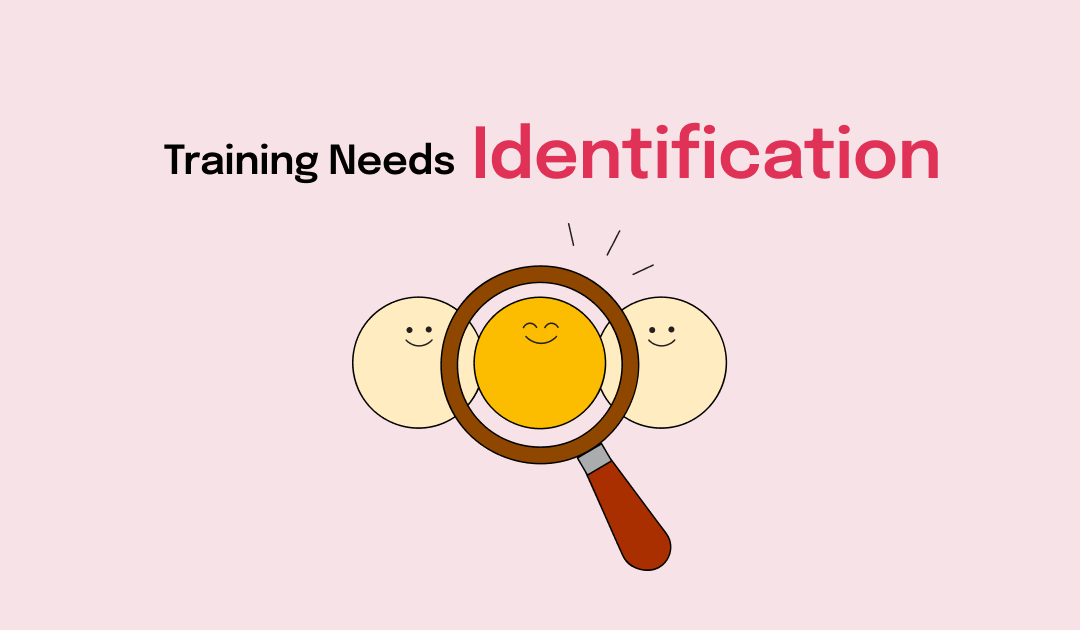The Ultimate Guide to Training Need Identification: Boosting Employee Performance
In today’s rapidly evolving business landscape, training need identification is crucial for aligning employee skills with organizational objectives. This strategic process helps companies pinpoint specific skill gaps within their workforce, ensuring that training programs are relevant, effective, and directly contribute to enhancing performance and productivity. Without a structured approach to identifying training needs, organizations risk wasting resources on ineffective training initiatives and missing opportunities for growth. By understanding the importance of identifying training needs, businesses can improve job satisfaction, boost employee engagement, and achieve a greater return on investment. This comprehensive guide will explore the methods, processes, and benefits of training need identification and provide practical steps to implement it effectively, ensuring your organization stays competitive and well-prepared for future challenges.
What is Training Need Identification?
Table of Contents
Training need identification is a systematic process used to assess and determine the specific skills, knowledge, and abilities employees require to perform their roles effectively. It goes beyond generic training approaches by targeting precise areas where employees need improvement, thus ensuring that learning interventions are meaningful and impactful. Unlike traditional training, which often applies a one-size-fits-all approach, techniques for training need identification to help tailor training to the actual requirements of the workforce. This process not only helps bridge the gap between current and desired performance levels but also aligns employee capabilities with strategic business goals, leading to more focused and results-driven training programs.
In the training needs identification process, organizations evaluate current competencies, identify skill gaps, and use data-driven insights to inform their training strategies. By understanding what employees need to learn, businesses can design training programs that are not only effective but also relevant to their unique challenges and objectives. This proactive approach fosters a culture of continuous learning and development, equipping employees with the skills they need to excel in their roles and drive organizational success.
Importance of Identifying Training Needs
Understanding the importance of identifying training needs is essential for any organization that aims to remain competitive and achieve sustainable growth. Identifying and addressing skill gaps ensures that employees are well-equipped to meet the evolving demands of their roles and contribute positively to the organization’s overall performance. Here are some key benefits of effectively identifying training needs:
- Enhanced Performance and Productivity: Addressing specific skill gaps allows employees to perform their tasks more efficiently, reducing errors and enhancing overall productivity.
- Improved Job Satisfaction and Engagement: When employees receive targeted training that directly addresses their needs, they feel more confident in their roles, leading to increased job satisfaction and higher engagement levels.
- Alignment with Business Goals: By aligning training programs with the organization’s strategic objectives, companies can ensure that their learning initiatives support overall business success and drive measurable results.
- Cost-Effectiveness: Focusing on areas that need improvement helps optimize training budgets, avoiding unnecessary expenditures on irrelevant or redundant training programs.
- Better Employee Retention: Employees are more likely to stay with an organization that invests in their development, reducing turnover rates and associated recruitment costs.
- Future-Readiness: Continuous identification of training needs helps organizations stay ahead of industry trends, ensuring their workforce is equipped to handle future challenges and technological advancements.
Key Methods to Identify Training Needs
Identifying training needs involves using various methods and techniques that provide a comprehensive understanding of the areas where training can have the most significant impact. Below are some of the most effective methods for identifying skill gaps in employees:
- Performance Reviews and Feedback: Regular performance reviews and feedback sessions between employees and supervisors are invaluable for highlighting strengths and pinpointing areas for improvement. These evaluations help identify specific skills that require development, enabling targeted training interventions.
- Job Analysis and Descriptions: Conducting thorough job analysis and reviewing current job descriptions allows organizations to map out the skills and competencies required for each role. By comparing these requirements with the actual skills possessed by employees, companies can identify any gaps that need to be addressed through training.
- Skills and Competency Assessments: Assessments, such as practical evaluations and online tests, provide quantifiable data on an employee’s current skill level. These assessments can focus on technical abilities, soft skills, or industry-specific knowledge, helping to determine the precise areas where training is needed.
- Surveys and Questionnaires: Direct feedback from employees through surveys and questionnaires allows them to voice their perceived training needs. This method is particularly effective as it empowers employees to highlight the skills they believe would help them perform better in their roles.
- Observation and Job Shadowing: Direct observation of employees performing their daily tasks can offer valuable insights into their work processes and reveal areas where additional training may be beneficial. Job shadowing, where an employee observes a more experienced colleague, can also help identify skills that need to be developed.
- Feedback from Customers and Clients: External feedback, such as customer complaints or client feedback, can highlight areas where employees may lack certain skills or knowledge. This input is crucial in identifying gaps that might not be immediately visible internally but significantly impact customer satisfaction and business outcomes.
How to Conduct a Training Needs Analysis (TNA)
Conducting a Training Needs Analysis (TNA) is a critical component of the training needs identification process. A well-executed TNA helps organizations gather detailed insights into their workforce’s training requirements, ensuring that the right skills are developed at the right time. Here are the key steps involved:
- Define Objectives: Start by clearly defining the goals of the TNA. What does the organization hope to achieve? For instance, enhancing customer service skills, improving compliance with regulations, or boosting technical proficiency.
- Data Collection Methods: Choose appropriate methods to collect data, such as surveys, interviews, focus groups, observations, and document analysis. Each method provides unique insights that contribute to a comprehensive understanding of training needs.
- Analyze Data: Once data is collected, analyze it to identify patterns, trends, and discrepancies between current and desired performance levels. This analysis will help prioritize the most critical training needs.
- Set Training Objectives: Translate the identified needs into specific training objectives. These should be SMART goals—Specific, Measurable, Achievable, Relevant, and Time-bound—that guide the training program design.
- Design and Implement the Training Program: Based on the analysis, design a training program tailored to address the identified needs. Choose the most suitable training methods, such as workshops, e-learning, or on-the-job training, to ensure the content is delivered effectively.
- Evaluate Training Effectiveness: After the training is conducted, evaluate its effectiveness using post-training assessments, feedback from participants, and performance metrics. This evaluation helps measure the impact of the training and identifies areas for future improvement.
Benefits of Conducting a Training Needs Analysis
Performing a Training Needs Analysis (TNA) provides several advantages that contribute to the overall effectiveness of an organization’s training initiatives:
- Targeted Training: TNA ensures that training programs are specifically designed to address the actual needs of employees, enhancing the relevance and impact of the training.
- Cost-Efficiency: By focusing on the most critical skill gaps, organizations can optimize their training budgets, avoiding unnecessary or redundant training sessions.
- Improved Performance and Productivity: Employees who receive targeted training are better equipped to perform their roles, leading to enhanced performance and higher productivity levels.
- Enhanced Engagement and Retention: When training is aligned with employee needs, it increases engagement and fosters a sense of value and commitment among the workforce.
- Succession Planning and Leadership Development: TNA helps identify high-potential employees and prepares them for future leadership roles, ensuring a robust pipeline of talent for succession planning.
Common Scenarios to Conduct TNA
Organizations should conduct a training needs analysis at various points to ensure their training efforts remain relevant and impactful. Here are some common scenarios when TNA is particularly beneficial:
- Onboarding New Employees: Assessing the skills of new hires helps tailor their training to ensure a smooth transition into the company.
- Introduction of New Technologies or Processes: When new tools, technologies, or processes are introduced, TNA helps determine the training required to ensure employees are equipped to use them effectively.
- Changes in Job Roles or Responsibilities: When employees take on new roles or responsibilities, TNA identifies the skills they need to succeed in their new positions.
- Performance Gaps or Quality Issues: If performance metrics indicate deficiencies, conducting a TNA can help identify the root causes and provide targeted training solutions.
- Strategic Organizational Goals: Aligning training initiatives with strategic objectives ensures that employees have the necessary skills to support the company’s growth.
- Regulatory or Compliance Changes: In industries with evolving regulations, TNA helps ensure employees stay compliant by identifying necessary training updates.
Best Practices for Effective Training Need Identification
To maximize the effectiveness of training need identification, it’s essential to follow best practices that ensure a comprehensive and accurate assessment of training needs:
- Involve Multiple Stakeholders: Engaging managers, employees, and even external stakeholders in the process ensures a holistic view of training needs.
- Use a Combination of Methods: Relying on multiple techniques, such as surveys, observations, and performance data, provides a more complete picture of skill gaps.
- Regularly Update Training Needs: The business environment is dynamic, and regular reviews of training needs ensure that learning initiatives stay aligned with current demands.
- Prioritize Training Needs: Not all training needs are equally critical; prioritize those that have the most significant impact on performance and business outcomes.
Conclusion
Training need identification is a strategic approach that enables organizations to systematically assess and address the skills and competencies their workforce needs to thrive. By following the outlined steps and best practices, companies can design effective training programs that not only boost individual performance but also support broader business objectives. Investing in this process is an investment in the future readiness and success of your organization.
Call to Action: Looking to implement a tailored training solution that drives real impact? FocusU specializes in engaging, customized corporate training programs that are designed to meet your specific needs. From gamified solutions to personalized learning journeys, we empower teams to achieve excellence. Discover how FocusU can elevate your team’s performance and unlock your organization’s full potential today!
Frequently Asked Questions
Q1. What is training need identification?
Training need identification is the process of determining specific skills, knowledge, and abilities that employees need to develop to improve performance and meet business objectives.
Q2. Why is identifying training needs important?
It ensures that training is relevant and impactful, enhances performance, boosts job satisfaction, and aligns with the organization’s goals for a higher return on investment.
Q3. What are the key techniques for training need identification?
Techniques include performance reviews, job analysis, skills assessments, surveys, observations, and feedback from external sources like customers.
Q4. How often should a training needs analysis be conducted?
It should ideally be conducted annually or whenever significant changes occur, such as new technology implementation, role changes, or strategic shifts in business focus.
Q5. What role does employee feedback play in identifying training needs?
Employee feedback provides critical insights into perceived gaps and areas where they feel additional training could enhance their performance.
Q6. How can companies measure the effectiveness of training?
Effectiveness can be measured through post-training assessments, performance evaluations, participant feedback, and tracking changes in key performance metrics.
Q7. Can training need identification improve employee retention?
Yes, targeted training demonstrates the organization’s commitment to employee development, increasing job satisfaction and loyalty, which leads to lower turnover rates.
Q8. What are the benefits of aligning training with organizational goals?
Aligning training with goals ensures that learning initiatives directly support business success, drive performance improvements, and contribute to achieving strategic objectives.


